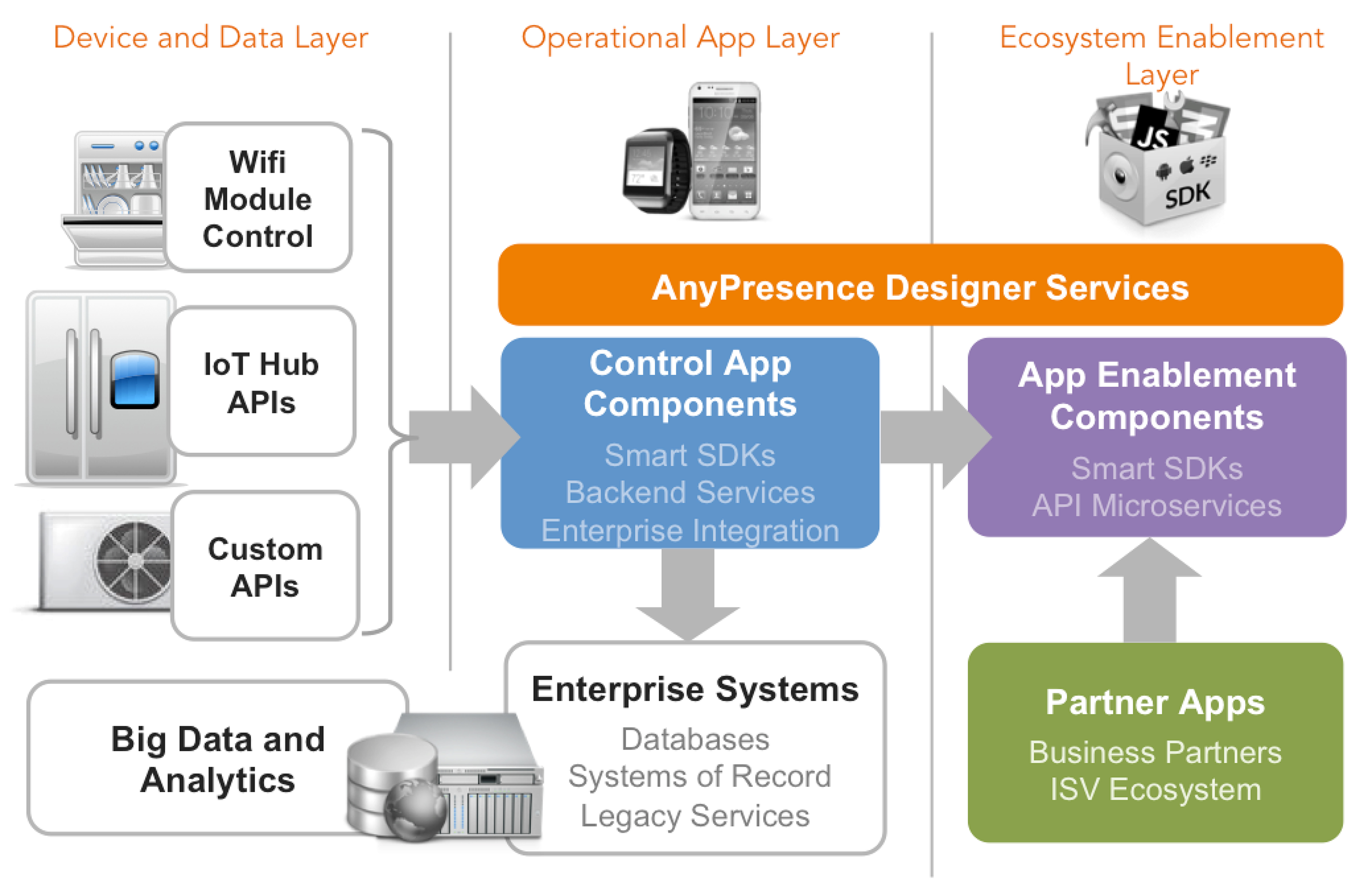The explosion of IoT (Internet of things) devices continues at a stunning pace, with an estimated 5 billion devices connected to the internet today and 25 billion expected by 2020. This massive growth also poses technology challenges for businesses seeking to capitalize on this trend, as these smart devices continue to receive, process, and transmit data on a massive scale using different protocols, data formats, backend services, and apps.
I’ll be joining the “Solving Interoperability” speaking panel at IoT APPNATION tomorrow, July 21 where I will discuss how interoperability, or the lack thereof, will affect IoT app development. I also hope to touch on why it is becoming increasingly important for organizations on both the supply and demand side of the IoT market to understand how to effectively build apps and enable innovation ecosystems that leverage this connected device landscape.

The AnyPresence app innovation platform is well positioned to support modern API, microservices and backend infrastructure needs of the nascent IoT market. There are several layers to an IoT platform stack, and corresponding solutions in each, which can help businesses build innovative IoT solutions more efficiently. Key components of an IoT software platform include:
- Device connectivity software (hubs)
Emerging software vendors such as Octoblu (Citrix), Zonoff, Ayla, and Arrayent are enabling smart devices to connect with everything, regardless of protocol or API. Whether it's a sensor, an appliance, a consumer electronics device, or industrial machinery, these “hub” software vendors allow users and systems to easily connect to and communicate to and from connected devices, typically bridging various wireless protocols such as ZigBee, Z-Wave, WiFi, and Bluetooth. - Big data store
With data growing so rapidly and the rise of unstructured data accounting for 90% of the data today, a big data store like Hadoop is imperative as part of an IoT platform. Splunk, SAP Hana, Amazon and Elastic MapReduce are all examples of tools in this category that can help store vast amount of data and enable rapid queries and aggregation against the data to support analytic requirements. - Analytics engine
This area covers the ability for users to mine data and analyze it to uncover interesting insights and run analytical reports. These insights can then be converted into revenue or cost saving opportunities for the organization that would otherwise have been difficult or impossible to find. Microstrategy, Pentaho and SAP BusinessObjects are all examples of modern analytics and business intelligence solutions. - Operational app services
This layer enables efficient development of apps that control devices, communicating with the device hub and integrating data from third-party services (push, SMS, email, amazon echo, etc.) and enterprise systems (SAP, Salesforce.com, Oracle, etc.), managing user identity and authentication, and securing data and workflow. Backend services (MBaaS), infrastructure, SDKs, and API solutions occupy this segment, represented by vendors like AnyPresence, Apigee, Mashery, and ThingWorx (PTC). - Developer ecosystem enablement tools
The most successful organizations in the IoT space will be those who can enable and foster a strong developer ecosystem, allowing partners, customers and developers to unlock the power of devices and data through APIs and SDKs. There are very few vendors in this emerging category, but AnyPresence offers some interesting capabilities with its App Launchpad solution, which is already in use at several large enterprises including MasterCard. Watch this webinar if you are interested in learning more about going beyond APIs to enable modern app ecosystems.
Also, if you’re attending IoT APPNATION, join me at 3pm on the Main Stage at Levis Stadium or visit us at Booth #3 in the expo floor tomorrow. Hope to see you there!